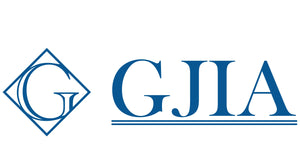What Is Needed For Warehouse Lighting Design?
I. Key Lighting Design Calculations (Practical Formulas)
1. Lumen Method Formula (Determining Fixture Quantity)
\[ N = \frac{E \times A}{\varphi \times U \times M} \]
- : Number of fixtures
- : Target illuminance (lux)
- : Area (m²)
- : Luminous flux per fixture (lumens, e.g., 24,000 lm for a 200W LED)
- : Utilization factor (0.4–0.8; lower for high-bay warehouses due to light loss)
- : Maintenance factor (0.7 for dusty environments)
2. Example Calculation
For a 1,000 m² picking zone (target: 500 lux), using 200W LED fixtures (24,000 lm), U=0.6, M=0.7:
N=24000×0.6×0.7500×1000≈49 fixtures

II. Critical Factors Affecting Lighting Requirements (Optimization Details)
1. Ceiling Height & Fixture Placement
- Low ceilings (<5m): Use wide-beam LEDs for uniform distribution.
- High ceilings (>10m): Deploy high-bay fixtures with narrow optics to minimize wasted light.
2. Reflectivity of Goods & Surfaces
- Dark-colored goods/racks: Increase illuminance by 20–30% (dark surfaces absorb light).
- Light-colored walls/floors (reflectivity >70%): Reduce illuminance by 10-15% (utilize reflected light).
3. Color Temperature & Visual Comfort
- Storage areas: 3000K–4000K (warm white, energy-efficient).
- Work zones: 4000K–5000K (neutral white, enhances focus and reduces fatigue).

4. Energy Efficiency & Smart Controls
- Zoned dimming: Motion sensors adjust brightness (e.g., aisles dim to 50% when unoccupied).
- Daylight harvesting: Automatic dimming in skylit areas to avoid over-illumination.

III. Fixture Types & Recommendations (By Application)
| Fixture Type | Efficacy (lm/W) | Lifespan (hrs) | Best For | Key Notes |
|---|---|---|---|---|
| LED High-Bay Lights | 120–200 | 50,000+ | General use, high ceilings | Anti-glare optics for operator comfort |
| LED Linear Strips | 100–150 | 50,000+ | Rack lighting, task areas | Recessed mounting to avoid glare |
| HID (High-Pressure Sodium) | 80–100 | 20,000 | Legacy warehouse retrofits | Poor CRI (<30), unsuitable for picking |
| Explosion-Proof Lights | 80–150 | 30,000+ | Hazardous/cold storage | Must meet ATEX/Ex II certification |
Key Takeaways
- Precision matters: Adjust calculations for ceiling height, reflectivity, and task requirements.
- LEDs dominate: Highest efficiency and longevity for warehouses.
- Smart controls = savings: Automated dimming can reduce energy use by 30–40%.
For complex layouts, use DIALux or similar software to simulate light distribution and eliminate dark spots.
Tags:








